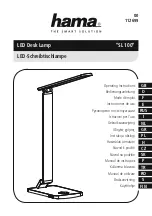
FTS 371 USER MANUAL
Flash Technology, LLC
Revision 4 – 9/7/2021
14
CONTROLLER WIRING
For AC powered systems, see controller wiring in
(page 23) and typical installation diagrams in
(page 25) and
For DC powered systems, see controller wiring in
(page 28) and typical installation diagrams in
(page 30) and
INPUT POWER CONNECTI ONS
Input power will be applied to J1.
AC powered systems are not sensitive to input
power phase and have an operational voltage range
of 85-265 VAC, 50/60 Hz with no modification
necessary to the input power module. The
replaceable input power fuses are located at F1 and
F2. To remove a fuse, disconnect power then pull
the fuse straight out.
On DC systems, observe polarity of input voltage
(c to DC+ and – to DC-). There is only one
replaceable input power fuse located at F1. To
remove the fuse, disconnect power then pull the
fuse straight out.
BEACON AND MARKER CONNECTIONS
For AC powered systems, one FTS 371 FH AC IR beacon may be connected. Connect the black wire to J2 terminal
L1, white wire to L2 and green wire to GND.
For DC powered systems, one FTS 371 FH DC IR beacon may be connected. Connect the red wire to J2 terminal
DC+, black wire to DC- and blue wire to GND.
Up to four of the MKR 372 DC IR or MKR 371 series marker lights may be powered from the MARKER OUTPUT at
J3. Connect the red wire to DC+, black wire to DC- and WHT/BLU wire to SENSE. The marker cable shield wire (non-
insulated) should be connected to GND at J2, BEACON OUTPUT.
Note:
The beacons or markers are powered if wired to the connectors. Alarming is configured by the Configuration
Switches and Jumpers.
FTS 371 FTC AC
Beacon and Marker Connections
FTS 371 FTC DC
Beacon and Marker Connections
FTS 371 FTC AC Input
Power Connections
FTS 371 FTC DC Input
Power Connections















































